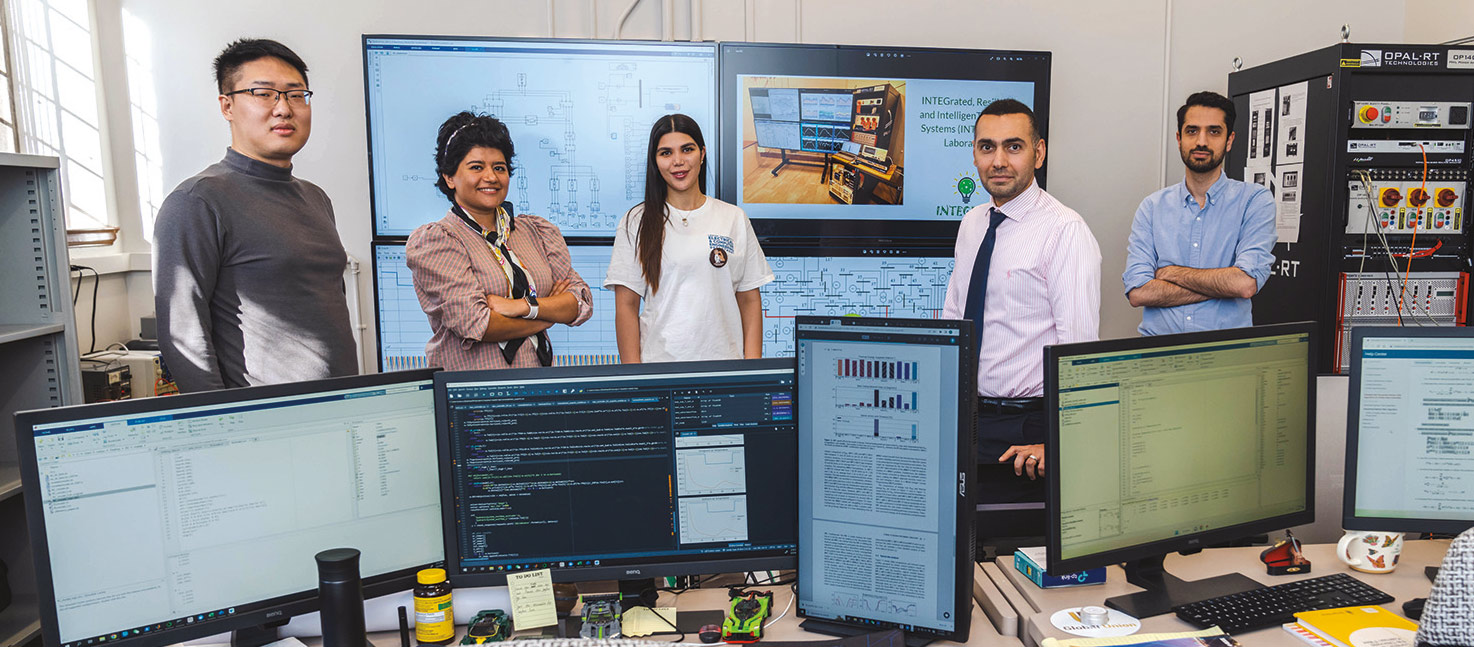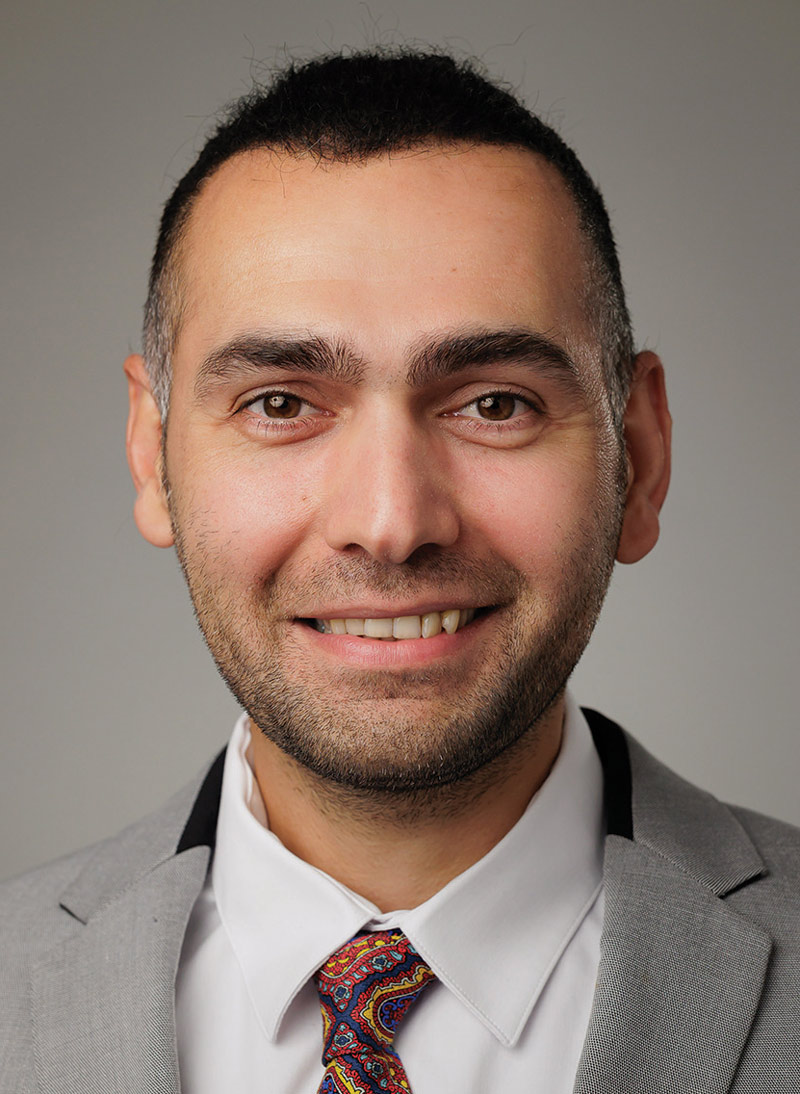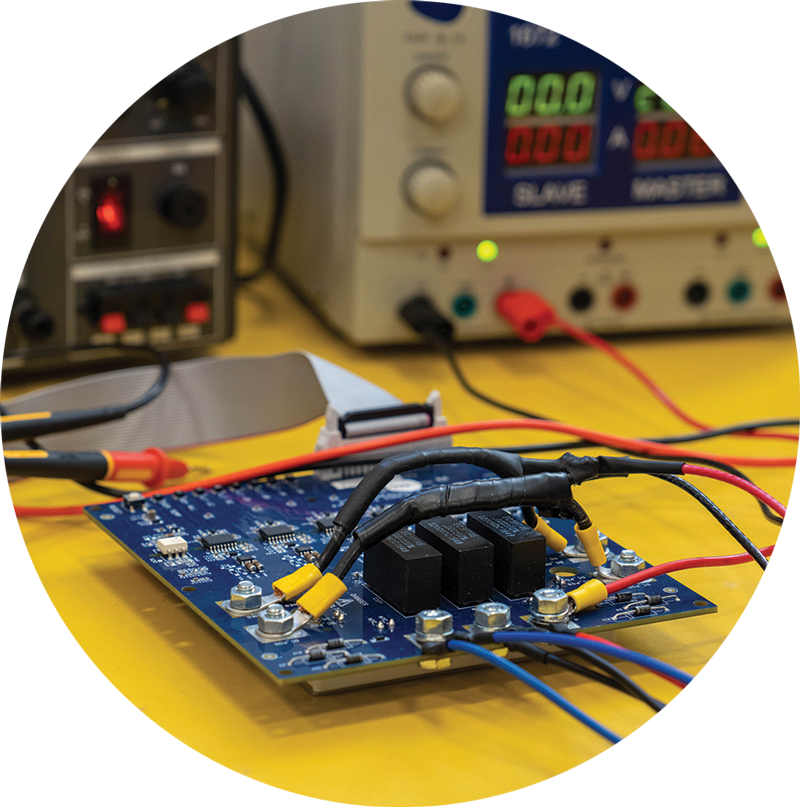
Javad Khazaei directs the Integrated, Resilient, and Intelligent Energy Systems Laboratory at Lehigh.
It’s not until we lose electrical power that we truly appreciate it. Or recognize just how reliant we are on it.
 “Nearly every aspect of our daily lives depends on energy,” says Javad Khazaei (pictured), an assistant professor of electrical and computer engineering. “It runs pretty much all of our infrastructure—our buildings, our water, our transportation. So if the energy system isn’t resilient, the operation of all those sectors is in jeopardy.”
“Nearly every aspect of our daily lives depends on energy,” says Javad Khazaei (pictured), an assistant professor of electrical and computer engineering. “It runs pretty much all of our infrastructure—our buildings, our water, our transportation. So if the energy system isn’t resilient, the operation of all those sectors is in jeopardy.”
Making that system more resilient, and more robust, is the primary focus of Khazaei’s research. Specifically, he studies power system dynamics and control using emerging machine learning theories. He utilizes data to obtain mathematical models for power system assets that account for the myriad factors that affect a system’s performance, and he uses those models to institute controls that protect it against uncertainties, faults, and blackouts.
Our current power system consists of distributed generation units—such as renewables, conventional power plants, and energy storage units—that produce electricity, and transmission and distribution systems that deliver energy to consumers. It’s a complex cyber-physical system with a lot of parts that all need to be controlled in real-time to ensure the lights (and just about everything else) go on and stay on. It’s also a system that’s increasingly subject to instability issues as more renewable energy resources, such as solar and wind, are added to the grid.
“My work focuses on how we can utilize data-driven approaches and machine learning techniques to improve our understanding for modeling and control of resources in a smart power system, such as renewable energy sources, power plants, battery storage devices, or electric vehicles,” says Khazaei, whose research has been funded by the National Science Foundation and the U.S. Department of Defense. “And once we have a good model, we look at how we can control the components of systems that range from small-scale, such as microgrids, to large-scale systems with multiple power plants and multiple large-scale renewable energy generation such as distribution grids and transmission systems.”
For instance, if you want a microgrid facility that powers up a building to operate standalone when grid outages happen, he says, you need to design an appropriate controller, and for a robust control design, you need an accurate model of your microgrid assets.
“If you have a mathematical model of the microgrid system, then you can design a controller that, no matter what, guarantees that you’ll be able to deliver that amount of power. So accurate models enable you to design controllers, which allow you to guarantee performance, but existing models are often obtained by several assumptions and might not be accurate enough when uncertainties and nonlinearities exist. For instance, the intermittent nature of renewable energy is an uncertainty that is often ignored in the modeling studies.”
To build those models, Khazaei and his team use a statistical machine learning technique called sparse regression. They collect measurements from distributed energy resources within the power system, such as voltage, current, frequency, generator’s rotor speed, solar radiation, or a battery’s state of charge and identify mathematical models of these resources using sparse regression techniques.
The challenge in modeling these systems lies in that the data he and his team use is often siloed or inaccessible. For example, he says, numerous firms develop renewable energy technologies, all of which connect to the main electricity grid through a power electronics converter. However, converter parameters and topology often vary by company and are rarely open-source.
“We don’t know all the parameters that have been used to build it, so our knowledge of these devices and the system is limited,” he says. “Using the measurements that we do have access to, we’re working on how we can develop models that accurately represent these systems. Once we have the model, and despite those uncertain parameters, we’re looking at how we can design controllers that guarantee performance.”
 Controllers help avert instabilities within a system: For instance, when a generation unit is lost in the power grid, the frequency drops significantly. This can trip renewable energy sources that often are synchronized to the main electricity grid and cannot operate below certain frequencies.
Controllers help avert instabilities within a system: For instance, when a generation unit is lost in the power grid, the frequency drops significantly. This can trip renewable energy sources that often are synchronized to the main electricity grid and cannot operate below certain frequencies.
An example of such failure was a temporary loss of 1000 megawatts of solar photovoltaic generation in California in July 2020 as a result of grid failure. Typically, a reclosing system quickly trips the breakers back and restores the system, says Khazaei. “But most of these renewable energy sources don’t have that capacity to bring the system back. My work focuses on designing various control techniques from classical model-based approaches to advanced data-driven and machine learning-based controllers such as deep learning to solve these issues. My recent research involves developing deep learning-based controllers for naval ships' power and energy systems, which are usually microgrids.”
Developing these tools will ultimately help in the country’s transition toward using more renewables to power the grid and enhance the national security of the U.S. So it’s both timely and urgent work. It’s also very hands-on, he says, as his lab’s hardware-in-the-loop microgrid facility allows students the opportunity to design and control microgrids with solar and wind energy systems. And that experience is giving those students a serious edge in the job market.
“Both my undergraduate and graduate students are now getting job offers months before they graduate,” he says. “The power and energy field is booming right now, and our students are leaving Lehigh with the kind of experience that will help them make a real impact.”

